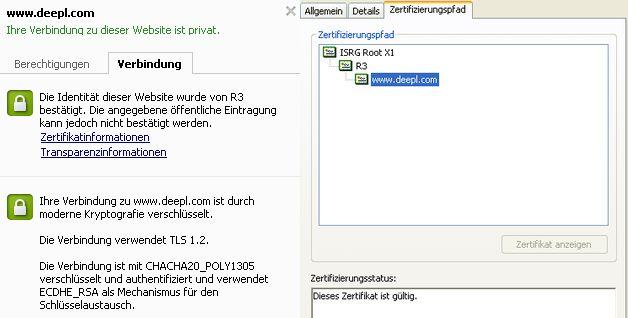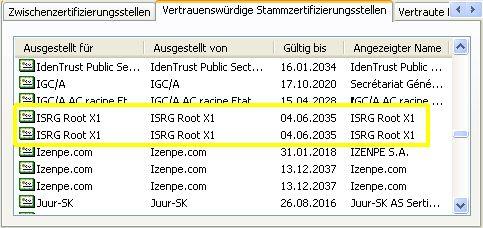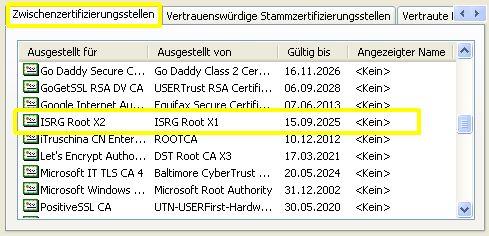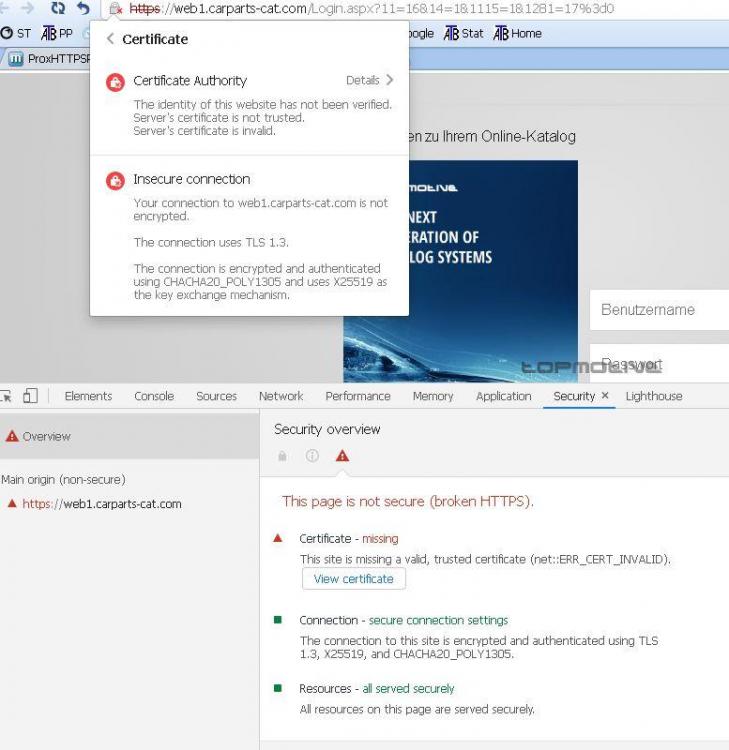
Anbima
MemberAnbima's Achievements
42
Reputation
-
Root Certificates and Revoked Certificates for Windows XP
Anbima replied to heinoganda's topic in Windows XP
I looked at the network traffic with Wireshark and even if the padlock is not green and https is crossed out, the data is transmitted in encrypted form. I also tested with an unencrypted page (http) and the transmitted data is readable. I assume that the faulty certificate is then only decisive for the identity of the server and that this cannot be confirmed. Thorium or Supermium may be good, but it is nowhere near as fast as 360Chrome on my computer. And the memory consumption is also much higher. -
Root Certificates and Revoked Certificates for Windows XP
Anbima replied to heinoganda's topic in Windows XP
If anyone is interested, I have found a way to get the padlock back to green on most pages in 360Chrome. This involves limiting the TLS to a maximum of 1.2 and blocking certain ciphers. However, it happens that some websites no longer work, such as msfn. Simply add the following to the start parameters: --ssl-version-max=tls1.2 --cipher-suite-blacklist=0xcca9,0xc02b,0xc02c -
Root Certificates and Revoked Certificates for Windows XP
Anbima replied to heinoganda's topic in Windows XP
When I access the website https://www.deepl.com/translator with Chrome 43.0.2357.134, the padlock is green. A different certification path is listed here than in 360Chrome. Is it possible to set which certification is used? -
ProxHTTPSProxy and HTTPSProxy in Windows XP for future use
Anbima replied to AstroSkipper's topic in Windows XP
I have already done Windows 2000 compatibility mode. It has always worked until now. But now there are pages that no longer work. I have tested Thorium, but it runs very slowly on my system, so you can't work with it. My system is too weak. The green padlock wouldn't be so important to me if the data is still transmitted in encrypted form. The screenshot shows that it is transmitted in encrypted form and then that it is not encrypted. Which is correct?- 922 replies
-
- TLS protocols
- HTTPSProxy
-
(and 3 more)
Tagged with:
-
ProxHTTPSProxy and HTTPSProxy in Windows XP for future use
Anbima replied to AstroSkipper's topic in Windows XP
I am also surprised that it shows unencrypted and encrypted. Hence my question. X1 is listed among the trusted root certification authorities, even twice:- 922 replies
-
- TLS protocols
- HTTPSProxy
-
(and 3 more)
Tagged with:
-
ProxHTTPSProxy and HTTPSProxy in Windows XP for future use
Anbima replied to AstroSkipper's topic in Windows XP
Does this mean that the data is transmitted encrypted? I was told in another thread that it's because 360Chrome Elliptic Curve key algorithm certificates are not compatible: https://msfn.org/board/topic/175170-root-certificates-and-revoked-certificates-for-windows-xp/page/41/ I've already done that too. This is displayed for me at the intermediate certification bodies. Maybe we can continue it in the other thread, where it fits better: https://msfn.org/board/topic/175170-root-certificates-and-revoked-certificates-for-windows-xp/page/41/- 922 replies
-
- TLS protocols
- HTTPSProxy
-
(and 3 more)
Tagged with:
-
ProxHTTPSProxy and HTTPSProxy in Windows XP for future use
Anbima replied to AstroSkipper's topic in Windows XP
- 922 replies
-
- TLS protocols
- HTTPSProxy
-
(and 3 more)
Tagged with:
-
ProxHTTPSProxy and HTTPSProxy in Windows XP for future use
Anbima replied to AstroSkipper's topic in Windows XP
CPU-Z shows me the following: SSE, SSE2, SSE3, SSE4A Should I use SSE3 or SSE4? Are SSE4 and SSE4A the same? Prozessor: AMD Phenom II X4 945- 922 replies
-
- TLS protocols
- HTTPSProxy
-
(and 3 more)
Tagged with:
-
ProxHTTPSProxy and HTTPSProxy in Windows XP for future use
Anbima replied to AstroSkipper's topic in Windows XP
Is there a portable version of Thorium? Do you have a download-link?- 922 replies
-
- TLS protocols
- HTTPSProxy
-
(and 3 more)
Tagged with:
-
ProxHTTPSProxy and HTTPSProxy in Windows XP for future use
Anbima replied to AstroSkipper's topic in Windows XP
As I said, deepl is not important because no sensitive data is transmitted. Yes, I have 32bit and 3MB of available memory. How much memory does your Thorium use when you have just started it?- 922 replies
-
- TLS protocols
- HTTPSProxy
-
(and 3 more)
Tagged with:
-
ProxHTTPSProxy and HTTPSProxy in Windows XP for future use
Anbima replied to AstroSkipper's topic in Windows XP
I have tested Supermium and it needs so much memory, which is not available. Does Thorium need less memory? For pages that I only want to view, it doesn't matter whether they are encrypted or not. I only have concerns when I have to log in or enter data, as is the case with the example mentioned. With https://www.deepl.com/translator for example, I don't care whether it is encrypted or not.- 922 replies
-
- TLS protocols
- HTTPSProxy
-
(and 3 more)
Tagged with:
-
ProxHTTPSProxy and HTTPSProxy in Windows XP for future use
Anbima replied to AstroSkipper's topic in Windows XP
There are more and more sites for which 360Chrome does not support the protocols. You have to register on the following page. And this data would then be transmitted unprotected. https://teccat.carparts-cat.com/ Or is there another solution?- 922 replies
-
- TLS protocols
- HTTPSProxy
-
(and 3 more)
Tagged with:
-
ProxHTTPSProxy and HTTPSProxy in Windows XP for future use
Anbima replied to AstroSkipper's topic in Windows XP
That should be the developer, right? https://github.com/wheever/ProxHTTPSProxyMII Do you always use the proxy, or only occasionally? Do you trust it?- 922 replies
-
- TLS protocols
- HTTPSProxy
-
(and 3 more)
Tagged with:
-
ProxHTTPSProxy and HTTPSProxy in Windows XP for future use
Anbima replied to AstroSkipper's topic in Windows XP
You can shorten it a little: if (shExpMatch(host, "*.example.com")|shExpMatch(host, "*.google.*")|shExpMatch(host, "*.wetter.com")) { But it is very confusing. However, I have noticed that it sometimes causes problems if the website integrates external content that does not have SSL. In this case, the external website must also be recorded. I'm thinking about running all pages via the proxy after all :-) However, the following sentence from the developer unsettles me: Be aware and careful! Use a direct connection when you don't want any mistakes made. Is the proxy not secure, or what does this mean?- 922 replies
-
- TLS protocols
- HTTPSProxy
-
(and 3 more)
Tagged with:





